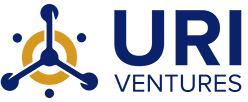Communications Technology Overview
Information and communications technology (ICT) stresses the role of unified communications and the integration of telecommunications (telephone lines and wireless signals) and computers, as well as necessary enterprise software, middleware, storage, and audiovisual systems, that enable users to access, store, transmit, and manipulate information.
The term ICT is also used to refer to the convergence of audiovisual and telephone networks with computer networks through a single cabling or link system. There are large economic incentives (huge cost savings due to the elimination of the telephone network) to merge the telephone network with the computer network system using a single unified system of cabling, signal distribution, and management.
ICT is a broad subject and the concepts are evolving. It covers any product that will store, retrieve, manipulate, transmit, or receive information electronically in a digital form (e.g., personal computers, digital television, email, or robots). For clarity, Zuppo provided an ICT hierarchy where all levels of the hierarchy “contain some degree of commonality in that they are related to technologies that facilitate the transfer of information and various types of electronically mediated communications”. Theoretical differences between interpersonal-communication technologies and mass-communication technologies have been identified by the philosopher Piyush Mathur. Skills Framework for the Information Age is one of many models for describing and managing competencies for ICT professionals for the 21st century.
In modern society, ICT is ever-present, with over three billion people having access to the Internet. With approximately 8 out of 10 Internet users owning a smartphone, information and data are increasing by leaps and bounds. This rapid growth, especially in developing countries, has led ICT to become a keystone of everyday life, in which life without some facet of technology renders most of clerical, work and routine tasks dysfunctional. The most recent authoritative data, released in 2014, shows “that Internet use continues to grow steadily, at 6.6% globally in 2014 (3.3% in developed countries, 8.7% in the developing world); the number of Internet users in developing countries has doubled in five years (2009-2014), with two thirds of all people online now living in the developing world.
source: learn.org
INVENTOR • Robert Vincent
ABSTRACT
APPLICATION
FEATURES & BENEFITS
This antenna design cancels out normal inductive loading and achieves equivalent performance with antennas 30 to 70 percent shorter than an ideal quarter-wave design. Powerful increase in the amount of current that moves through the antenna with excellent radiation and heat profile. Large frequency currents are transformed into radiation through the antenna. Ability to rapidly change antenna resonance to desired frequencies while maintaining constant bandwidth.





